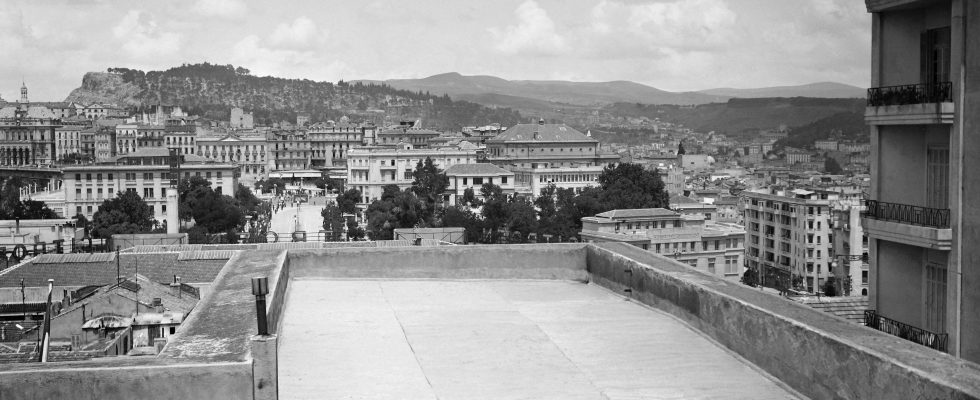On Friday, August 3, 1934, in the early evening, rumors grew in Constantine: a drunken Jew had allegedly uttered insults in front of the mosque. A few hours later, 2,000 Muslims armed with clubs and knives descended on his co-religionists. The pogrom lasts until Monday. The toll is heavy: 28 dead, including three Muslims, but also 200 stores looted, windows broken and goods scattered in the street. In the Attali apartment, 6, rue des Zouaves, there were five victims, slit throats, skull fractures, traces of stab wounds. The Dadoun, Guedj, Halimi, Zerdoun families… suffered the same fate.
The person responsible for starting the riot is called Eliaou Kalifa. But this former tailor, soldier of the 3rd Zouave regiment, denies it. He only drank four anisettes and just asked the faithful not to appear naked at the mosque window, in order to protect his wife from the spectacle. The tone would then be raised, to the point of drama.
This affair, which made headlines in mainland France, reveals the fractures in French Algeria. According to the president of the local Jewish consistory, “we slaughtered children after having horribly mutilated the parents, we set fire to the houses that we knew were inhabited; we acted for eight consecutive hours, in the very European center of the city, in in broad daylight, in front of the indifferent eyes of the representatives of the armed force who had received no order to intervene.” He just neglects to name the murderers. For fear of reprisals?
The Jews of Constantine have the feeling of being caught between the anti-Semitic defenders of the colonial order, who consider them too close to the North African “natives”, to the point of calling into question the Crémieux decree, and the Algerians, who consider them too close to the French, while jealous of their status. Their situation seems so uncertain that the police are considering their emigration to mainland France!
The great fear of the “Europeans”
The main “native” elected official, Mohammed Salah Bendjelloul, ardent defender of the extension of full political citizenship to all Muslims, more or less discreet anti-Semite, prefers to procrastinate. To avoid any incident, he did not attend the funeral, condemned the violence of the rioters and proclaimed his loyalty to France.
State representatives and elected officials play on ambiguity. The mayor of Constantine, Emile Morinaud, formerly secretary of the “anti-Jewish group” created by Edouard Drumont, and since allied with Jewish municipal councilors…, denounces “these infamous assassins”. But he “forgets” to specify who the victims are, so as not to appear obligated. While in Paris the former governor general Maurice Viollette is considering granting French nationality to Muslims, he likes to emphasize the “atavistic” nature of the violence. The great fear of “Europeans”, with 1 million individuals and 200,000 voters, is to become an electoral minority and, for elected officials, to lose their mayoral mandates.
Several investigations were carried out, which led to contradictory conclusions. According to the “Israelite thesis”, the “pogrom” was planned by Muslim leaders wishing to create anti-French agitation by attacking its weak link. The police shared this analysis, before giving it up, under pressure from the authorities. The “native thesis”, defended by Muslim notables, favors the incident which allegedly degenerated. The official version, led by the general governorate, takes this one up, because it is the least politically delicate.
The intriguing journey of Mohamed el-Maadi
Joshua Cole, in his remarkable investigation The Provocateur. L‘secret history of the anti-Jewish riots in Constantine (August 1934), calls this beautiful building into question. The history professor at the University of Michigan discovered that a Parisian police inspector had established, in 1938, a link between the assassination of Italian anti-fascists Carlo and Nello Rosselli and a certain Mohamed el-Maadi, presented as part of the “agitators” at the origin of the pogrom. El-Maadi is one of the rare French Muslims by descent, since his grandfather, a spahis lieutenant married to a French woman, was naturalized. He studied at the Sorbonne before also joining the army. The officer participated in the Rif War, then was assigned to the 3rd Zouave Regiment. He was reportedly seen several times during the pogrom. Could he be the “provocateur”, the leader of the pogrom? If irrefutable proof could not be given, the bundle of presumptions is as attractive as El-Maadi’s journey is enlightening.
After leaving the army in 1936 out of hostility to the Popular Front, the latter returned in 1940 and obtained the Croix de Guerre for his campaign in France. In the meantime, he was one of the closest henchmen of Jean Filiol, co-founder of La Cagoule, a clandestine far-right terrorist organization. In 1941, he was recruited by the Jewish Affairs Commission, then worked alongside Henri Lafont, the head of the French Gestapo, before creating a North African brigade responsible for annihilating the maquis. At the end of the war, the “SS Mohamed” fled to Berlin, where he found the former grand mufti of Jerusalem Hadj Amine el-Husseini. He probably died at the end of 1953 in Cairo, the city of choice for future FLN executives.
.
